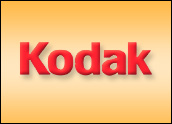
Eastman Kodak announced Thursday it would cut 3,000 more workers from its payroll, bringing the total number of layoffs close to 30,000 as the once dominant photography company tries to reinvent itself in the digital age.
At a meeting with investors, Kodak laid out plans to generate “profitable digital growth” in the coming year and streamline operations to assure long-term profitability.
The company said it would push to complete the major part of its sweeping business restructuring by year’s end.
Kodak’s revamp began in early 2004, when plans to cut thousands of jobs were first laid out. It has since updated the plan twice, most recently saying in August 2006 that it would cut as many as 27,000 jobs.
The company, which cut 1,200 jobs during the fourth quarter of 2006, now says the total number of jobs eliminated will be between 28,000 and 30,000. It also said that it will take up to US$3.8 billion in charges to cover the associated costs of the layoffs.
Kodak did not reveal where the additional cuts would be made, but reiterated that it sees a bright future for its venerable brand in the digital photography era.
“During the past three years, we have made visible and significant progress in creating the new Kodak,” said CEO Antonio M. Perez. “In 2007, we are continuing to move aggressively to complete the transformation of our business operations and fully implement a business model which will power our future success in digital markets.”
Transformation in Progress
Despite the pledges of future profits and new prospects, Eastman Kodak shares fell in morning trading Thursday, losing about 2.4 percent in a falling market, to $26.06. At the end of January, the company had been riding relatively high after posting its first profit in nearly two years.
Kodak’s transformation has included the sell-off of its medical imaging business — a deal that is expected to raise more than $2.5 billion for the company — as well as new consumer- and business-focused initiatives.
Earlier this week, the company made a splash by unveiling a printer that it said would offer dramatic inkjet savings, with replacement cartridges that will cost consumers a fraction of the price of most printer ink.
Whether or not that product, the Easy Share All-in-One printer, changes Kodak’s fortunes, it could affect the overall printer market. Many leading PC and printer makers all but give away their printers and rely on the fatter profit margins generated by ink cartridge sales to keep them in the black.
Kodak’s efforts to expand the number of digital photo-printing kiosks using its technology would combine with Kodak’s extensive patent portfolio to give it a strong presence in the digital space, Perez claimed.
“As an early investor in digital technology, Kodak has amassed a sizable amount of extremely valuable intellectual property (IP),” he added. “We are committed to generating value from that asset by using it to drive business partnerships, provide the company with access to new markets and additional technology, and to generate earnings and cash.”
That IP portfolio was on display recently when Kodak and Sony settled a long-running patent dispute, which resulted in Sony having to pay Kodak royalties for using technology that Kodak laid claim to inventing.
Work in Progress
The digital photography revolution has already claimed its share of casualties from the world of traditional picture taking.
For example, one-time corporate giant Polaroid, whose instant photography was displaced by digital cameras and low-cost printers, went bankrupt and is attempting to re-emerge as a digital photography expert and a consumer electronics player.
In some ways, Kodak may be better positioned to withstand and even take advantage of the market changes. The company argues that its brand remains synonymous with quality photography for many consumers, and even though digital cameras take the majority of photographs, most picture-takers still share their images produced professionally — often on Kodak paper and with Kodak inks — or printed at home.
Some analysts have predicted that Kodak will eventually jettison its traditional film-based business entirely. The company still sells millions of dollars worth of film every year — mainly to photography studios — but even that part of its business is seen as slowing considerably in coming years.
Finding growth in digital imaging and printing may prove difficult as well. Camera prices, even for more advanced devices, have dropped significantly as digital technology becomes a commodity and printer sales are also forecast to slow, according to Gartner analyst David Haueter.
That, and Kodak’s moves to target the razor-and-blade business model favored by entrenched printer makers such as HP and Dell, could make it difficult for Kodak to garner market momentum, Haueter added.























































Social Media
See all Social Media